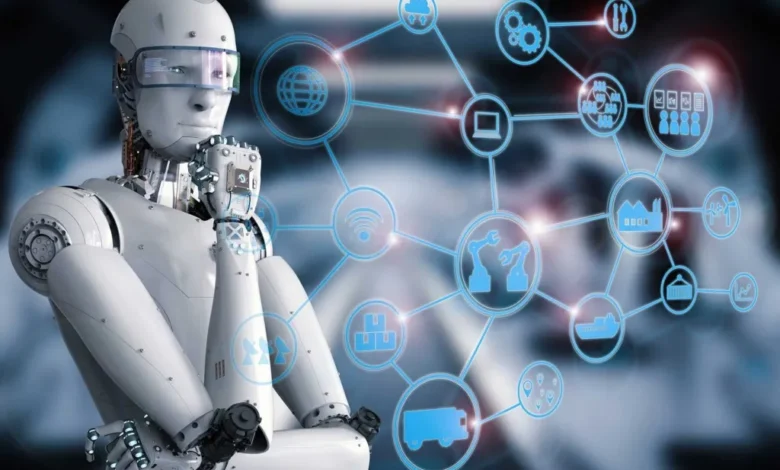The Metaverse Chronicles: Unveiling the New Frontier of Technology and Society in 2023

Imagine a world where reality and virtuality seamlessly intertwine, where physical and digital experiences merge to create an immersive and interactive environment. A realm where people can connect, create, and explore beyond the boundaries of the physical world. Welcome to the metaverse, the next frontier of technology and society. In this article, we will delve into the fascinating world of the metaverse, exploring Frontier of Technology and Society its concept, potential, and impact on various aspects of our lives. From its origins to its current state, from its applications to its implications, we will embark on a journey to uncover the mysteries of the metaverse and its role in shaping the future.
What is the Metaverse?
The metaverse refers to a virtual universe that encompasses multiple interconnected digital spaces or platforms. It is a collective virtual realm that includes virtual reality (VR), augmented reality (AR), and other forms of immersive technologies. In the metaverse, users can interact with each other and the environment, create and customize their virtual identities, and engage in various activities, such as socializing, gaming, shopping, learning, and more.
The concept of the metaverse has been around for decades, with roots in science fiction literature and popular culture. However, recent advancements in technology, such as VR, AR, blockchain, and artificial intelligence (AI), have brought the metaverse closer to reality. Tech giants like Facebook, Google, and Microsoft, as well as numerous startups, are investing heavily in developing the metaverse, envisioning it as the next major paradigm shift in computing and communication.
The Evolution of the Metaverse
The metaverse has come a long way since its inception. It has evolved from rudimentary virtual worlds and online games to a sophisticated and interconnected digital ecosystem. The metaverse has undergone several stages of development, with each phase bringing new capabilities and possibilities.
The First Generation: Text-Based Virtual Worlds
The concept of the metaverse can be traced back to the 1970s, when text-based virtual worlds like MUDs (Multi-User Dungeons) emerged. These early virtual worlds were accessed through text-based interfaces and allowed users to interact with each other in shared virtual spaces. While limited in terms of graphics and immersion, these early experiments laid the foundation for the metaverse, introducing the concept of a shared digital space.
The Second Generation: 3D Virtual Worlds
The advent of graphical user interfaces (GUI) in the 1980s paved the way for the next generation of virtual worlds. In the 1990s, platforms like Second Life and Active Worlds introduced 3D graphics, allowing users to create and customize their virtual avatars, build virtual objects, and engage in various activities. These virtual worlds gained popularity among users who sought social interactions, creative expression, and economic opportunities in the virtual realm.
The Third Generation: Virtual Reality (VR)
The rise of VR in recent years has transformed the metaverse into a more immersive and interactive experience. VR headsets like Oculus Rift, HTC Vive, and PlayStation VR have enabled users to enter virtual worlds in a more natural and immersive way. Users can now interact with the virtual environment using hand gestures, body movements, and voice commands, creating a sense of presence and embodiment. VR applications in gaming, socializing, training, and therapy have gained traction, opening up new possibilities for the metaverse.
The Fourth Generation: Augmented Reality (AR)
AR, on the other hand, overlays digital content onto the physical world, blending virtual and real elements seamlessly. Popular AR platforms like Pokemon Go and Snapchat have already introduced millions of users to the concept of mixing digital and physical realities. AR has the potential to revolutionize various industries, from gaming and entertainment to education, retail, and beyond. With advancements in AR technologies, the metaverse is expanding its horizons beyond VR, opening up new avenues for interaction and engagement in the virtual realm.
The Potential of the Metaverse

The metaverse holds immense potential for transforming various aspects of our lives. From entertainment and social interactions to business and education, the metaverse is poised to reshape the way we perceive and engage with the digital world.
Social Interactions
The metaverse offers a new dimension for social interactions, enabling people to connect, communicate, and collaborate in virtual spaces. Users can create virtual avatars, personalize their virtual identities, and socialize with others in shared virtual environments. The metaverse has the potential to break down geographical barriers, allowing people from different parts of the world to come together and form communities based on shared interests, hobbies, or goals. Virtual events, concerts, and conferences can be held in the metaverse, offering immersive and interactive experiences that transcend physical limitations.
Entertainment and Gaming
Gaming has been one of the driving forces behind the development of the metaverse. Virtual worlds and online games have already gained massive popularity, with millions of users spending hours in immersive digital environments. The metaverse can offer even more immersive and interactive gaming experiences, where users can not only play games but also create and customize their own virtual worlds, objects, and characters. Virtual reality (VR) and augmented reality (AR) technologies can elevate gaming to a whole new level, providing realistic and immersive experiences that blur the lines between the physical and digital worlds.
Business and Economy
The metaverse presents new opportunities for businesses and economies. Virtual marketplaces within the metaverse can enable users to buy, sell, and trade virtual goods and services, creating a virtual economy. Virtual advertising and branding can also become a significant part of the metaverse, as companies can leverage the immersive and interactive nature of virtual environments to engage with users in innovative ways. Virtual offices, virtual events, and virtual training can transform the way businesses operate, reducing the need for physical spaces and travel, and enhancing remote collaboration.
Education and Learning
The metaverse has the potential to revolutionize education and learning, offering immersive and interactive experiences that go beyond traditional classroom settings. Virtual classrooms can provide a more engaging and inclusive learning environment, where students can explore virtual worlds, simulate real-world scenarios, and interact with virtual objects and characters. Virtual training can be used in various industries, from healthcare and aviation to engineering and manufacturing, to provide realistic and hands-on experiences without the need for physical resources. The metaverse can democratize access to education, making learning more accessible and engaging for people around the world.
Implications of the Metaverse
While the metaverse presents exciting possibilities, it also raises important questions and concerns that need to be addressed. Here are some of the implications of the metaverse:
Privacy and Security
As the metaverse blurs the lines between the physical and digital worlds, privacy and security become critical concerns. Users’ personal information, virtual identities, and activities within the Frontier of Technology and Society need to be protected to prevent data breaches, identity theft, and other cyber threats. Regulations and standards need to be in place to ensure the responsible use of data and protect users’ privacy rights.
Inclusivity and Accessibility
The Frontier of Technology and Society should strive to be inclusive and accessible to all users, regardless of their physical abilities, socio-economic status, or other factors. Efforts should be made to ensure that virtual environments are designed with accessibility in mind, allowing users with disabilities to fully participate and engage in the Frontier of Technology and Society. This includes considerations such as accommodating different sensory needs, providing alternative modes of interaction, and addressing potential barriers to access, such as cost or technological limitations.
Ethical and Social Impact
The Frontier of Technology and Society raises ethical and social questions that need careful consideration. Issues such as virtual property rights, virtual currencies, digital ownership, and virtual identity raise complex legal and ethical dilemmas. The impact of the Frontier of Technology and Society on mental health, social interactions, and human behavior also requires close attention. Responsible and ethical use of the metaverse should be prioritized to prevent misuse, exploitation, and negative consequences.
Economic Disparity
The Frontier of Technology and Society has the potential to create economic disparities, with some users having more resources, influence, and opportunities than others. Virtual economies within the Frontier of Technology and Society need to be regulated to prevent monopolies, unfair competition, and economic imbalance. Efforts should be made to ensure that the benefits of the Frontier of Technology and Society are distributed equitably and that access to opportunities within the virtual world is not limited to a select few.
Read more:20 Best Metaverse Development Firms in the US, UK, and Dubai
Conclusion
The Frontier of Technology and Society is a new frontier of technology and society, offering immense potential for transforming our lives in various ways. From entertainment and gaming to social interactions, business, and education, the Frontier of Technology and Society is reshaping how we perceive and engage with the digital world. However, it also comes with important implications that need to be addressed, including privacy and security, inclusivity and accessibility, ethical and social impact, and economic disparity.
As the Frontier of Technology and Society continues to evolve, it is crucial to prioritize responsible and ethical use, and to ensure that it is designed with inclusivity, accessibility, and fairness in mind. Regulations, standards, and guidelines should be established to protect users’ rights, prevent misuse, and foster a positive and inclusive virtual environment. The metaverse has the potential to unlock new opportunities and possibilities, and it is up to us to navigate this new frontier with caution, mindfulness, and a commitment to creating a better digital future for all.











